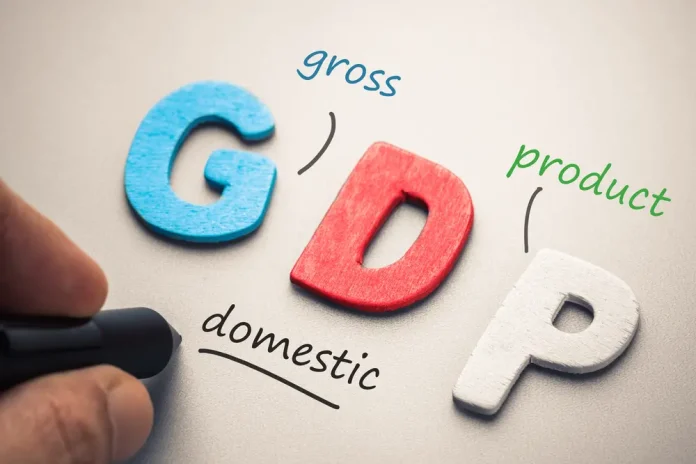According to forecasts by Euromonitor International, the gross domestic product (GDP) of Sub-Saharan Africa is expected to quadruple from USD 2 trillion in 2022 to over USD 4.5 trillion by 2040.
As part of its investigation of the present and potential economic circumstances of the continent, Euromonitor examined the economics of 46 African nations for its study Sub-Saharan Africa: A Rising Economic Frontier.
Supported by a boom in the economies of East Africa, rising consumption, commodity exports, and foreign direct investment are anticipated to propel Africa’s economic growth. By 2040, East Africa is expected to lead the way with a 193% GDP growth rate.
According to an estimate by Euromonitor, East Africa’s GDP is predicted to grow by 193% in real terms between 2022 and 2040, significantly higher than that of Central Africa (+128%) and West Africa (+105%) and Southern Africa (+79%).
East Africa’s economic growth is predicted to be one of the fastest globally, outpacing other emerging and developing markets such as India (+164%), Vietnam (+171%) and Indonesia (+130%). The region is predicted to become a USD 1 trillion economy by 2037 and is anticipated to overtake Southern Africa as the second largest regional economy by 2039.
By 2040, East Africa is expected to account for 28% of Sub-Saharan Africa’s GDP, up from 21% in 2022. The region’s key heavyweight economies of Ethiopia, Kenya, Uganda and Tanzania will drive this economic growth, with average GDP across all four expected to surge by 200% over the forecast period.
Continued foreign direct investment inflows into East Africa are anticipated to sustain the region’s strong economic momentum with investments expected to go to technology, energy, manufacturing and services sectors, as well as IT services and renewable energy solutions.
Euromonitor research found that in 2022, based on Sub-Saharan Africa’s growth over 2000-2014, its total GDP could have potentially reached USD 2.7 trillion, well above the current USD 2.0 trillion. GDP per capita in Sub-Saharan Africa could have been 35% higher in 2022 based on growth trends over 2000-2014.
Political and economic instability, weak business appeal, financial inequality, inadequate infrastructure and a lack of education opportunities were identified as the defining factors that weakened the growth trajectory, and remain challenges that will need to be addressed by governments and businesses for the region to reach its full potential.
Whilst many parts of Sub-Saharan Africa have displayed slowing economic growth since 2015, some economies have continued to remain resilient.
Over 2015-2022, real GDP growth in Ethiopia, Cote d’Ivoire and Tanzania reached 7.6%, 6.2% and 6.0%, respectively, in cumulative average growth rate (CAGR) terms, compared to Sub-Saharan Africa and world averages of 2.6% and 2.9%.
This was even faster than the pace of growth in fast-growing emerging markets such as China (+5.9%) and India (+5.0%). Reflecting on the findings, Fransua Vytautas Razvadauskas, Insights Manager at Euromonitor International, said: “While sub-Saharan Africa has its fair share of issues and hurdles to overcome, based on projections by Euromonitor International, it is well positioned to become the next global economic frontier, elevating this often-overlooked region of the world to a prominent powerhouse on the global stage by 2040.
Sub-Saharan Africa has the potential to leverage its favourable landscape and climate to benefit from investments in green and sustainable energy, Euromonitor notes. This has become especially clear amid the war in Ukraine which has led to countries re-evaluating their dependence on fossil fuels.
The International Renewable Energy Agency estimates that 90% of the world’s electricity can come from renewable energy sources by 2050, yet, as of 2022, only 26% of electricity output globally came from renewables.
In 2022, 70% of Sub-Saharan Africa’s electricity output came from fossil fuels. Yet over 2010-2022, wind and solar power energy generation in Sub-Saharan Africa collectively grew by 21,000 GWh and accounted for 23% of the total growth of electricity output generation.
Feeding the region’s economic growth will require a more robust, affordable and sustainable energy sector, especially since in 2022 just 53% of Sub-Saharan Africa’s population had access to electricity.
The global shift away from fossil fuels has created unprecedented demand for minerals and metals needed to build green technologies, which are resources Africa has in abundance. This represents immense growth and large opportunities to develop mineral and metals supply chains in Sub-Saharan Africa.
A growing youth and middle class population in Sub-Saharan Africa is also likely to necessitate investment from governments and companies in delivering sustainable energy, financial services and infrastructure that enables connectivity and growth in the region to meet rising consumer demand.
Razvadauskas added: “For companies to thrive in this fast-growing, uniquely diverse region of the world, they need to do their due diligence and understand the nuances of the area and its countries. Stability needs to take precedence over fast growth, which in turn can help build regional brand awareness and improve prospects for future partnerships. As the middle classes grow across the region, companies need to adjust to the expectations of this new, young, and rapidly urbanising population.”














